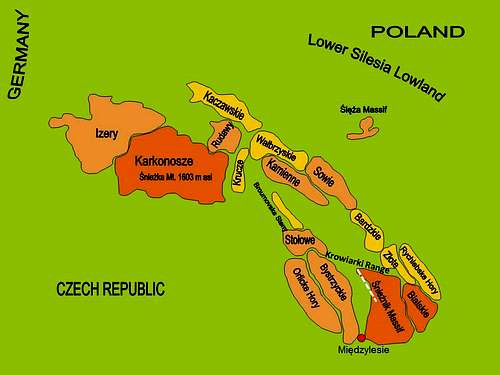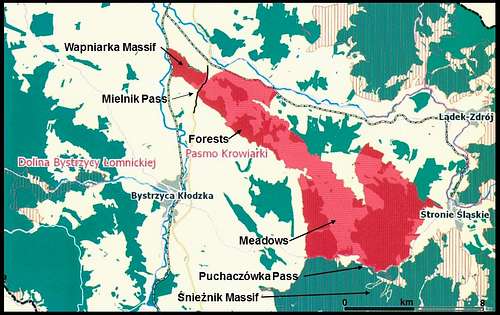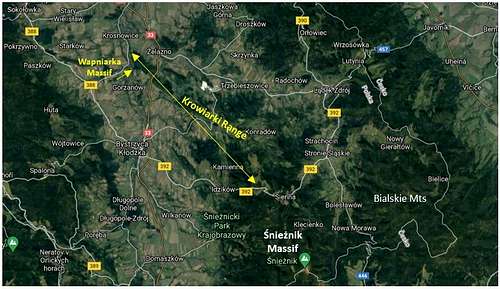-
 605 Hits
605 Hits
-
 75.81% Score
75.81% Score
-
 6 Votes
6 Votes
|
|
Album |
|---|---|
|
|
Informational |
Vegetation of the Wapniarka Massif is endangered due to water deficit
In Europe, natural environments with valuable habitats, flora and fauna, are protected in areas of Natura 2000. The Natura 2000 regulations have been ratified by Poland. Among the many areas so protected in Poland, there is also the Krowiarki Range (PLH020019), and the Wapniarka Massif in it as a valuable unit. The Krowiarki Range is sparsely forested, most of the area is occupied by arable fields, pastures and meadows. In its NW part, there are active or closed limestone quarries. The bedrock is composed of gneisses, slates, limestones and marbles. The Wapniarka Massif lies at the NW end of the vast Krowiarki Range stretching from the Puchaczówka Pass, NW from the Śnieżnik Massif and the Bialskie Mountains in the Western Sudetes. In the Krowiarki Range, the Massif is geomorphologically separated by the Mielnik Pass. The small wooded Massif consists of two mountains, Dębowa and Wapniarka, with peaks over 500 m a.s.l. There are limestone rock outcrops on the top of Wapniarka Mt. and closed limestone quarries on its ES slopes. The Krowiarki Range is poorly forested, therefore its forests should be particularly protected for environmental reasons, including those in the Wapniarka Massif. This is all the more important as the area has a weak hydrographic network, with some of the surface waters disappearing into the karst limestone formations and only locally flowing to the surface. The vegetation of the Wapniarka Massif is irrigated only by rainfall, therefore periodic droughts strongly limit it. The Massif is predominantly overgrown by a beech forest. Smaller areas are covered with oaks, lindens, maples, spruces and firs. The beech forest with orchid undergrowth is protected here by Natura 2000. There are many protected plants in the undergrowth, including valuable rock vegetation (in the attached photos). The photographic documentation shows that in the Massif, handsome trees (beeches, oaks, spruces) were cut down, undergrowth and soil were removed, sometimes to the bedrock. Fir trees were planted, but in the case of droughts, with the open soil, such plantings are exposed to damage. For instance, also some of the large beeches wither of drought. Such trees should be left in situ to enrich the water retention layer. After the old beech trees were removed, orchid populations disappeared due to drought on the slopes or due to heavy shade from a canopy of young beeches. The skidding of trunks after cutting, their storage and transport requires the use of large forest machines. On the clearing surfaces, the forest was eliminated, the forest litter and soil were destroyed. In addition, here, on the rocks, the soil covers them with a thin layer, and it can be very easily eroded. After storing the cut trunks and their removal, vast squares and wide tracts remain devoid of vegetation on the slopes of the Massif. These places are strongly eroded by rainwater runoff.
GIS technologies and satellite photographs should be used to control the realisation of nature protection. The just attached Google maps and photos reveal that tree felling takes place in many places of the Massif, also in its top parts, even on rocky background.
In Poland, in forest practice, there is no division into tree plantations and protected forests. Polish forests are treated as a multifunctional ecosystem. This should be achieved through: universal protection of forests and their sustainability, sustainable use of the forest, e.g. the proportion between protection and logging, and enhancement of forest resources. Observing the forest management in the Wapniarka Massif, in the valuable beech forests, it can be concluded that there is no protection there, on the contrary, they are degraded, despite the legal regulations of Natura 2000. It is also difficult to talk about increasing forest resources in this case, where the old beech forest is replaced by plantations of seedlings. With the dominance of timber harvesting from forests, the ecosystem is not multi-functional. Such forest management is a common “disease” in Poland. With the current climate changes, see: rising temperatures, the reconstruction of damaged mountain forests will be very difficult, if not impossible. Such a conclusion may also apply to the Wapniarka Massif.






